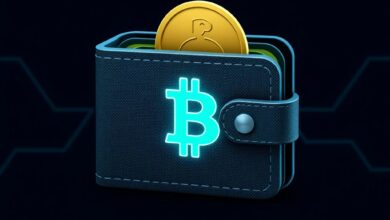How to protect your crypto from hackers

Enable 2FA on all accounts to add an extra layer of protection. This two-factor authentication significantly reduces the risk of unauthorized access by requiring not just a password but also a second form of verification, such as a code sent to your mobile device.
Prioritize wallet safety by using reputable wallets that offer robust encryption and backup options. Hardware wallets are preferable for long-term storage, as they keep private keys offline and away from potential online threats.
Be vigilant against phishing attempts. Always verify the authenticity of emails or messages requesting sensitive information. A common tactic involves mimicking official communication, so double-check URLs and sender addresses before clicking on any links.
Create strong, unique passwords for each account related to your financial assets. Utilize a combination of letters, numbers, and special characters to enhance security. Regularly update these passwords and consider using a password manager to keep track of them securely.
Regularly make backups of wallet data and important credentials. Store these backups in multiple secure locations to ensure easy recovery in case of loss or theft. An effective backup strategy is crucial for minimizing risks associated with data breaches or hardware failures.
Use Hardware Wallets Securely
Always enable 2FA on your hardware wallet to add an extra layer of protection against unauthorized access. This requires a second form of verification, typically through a mobile app or SMS, making it harder for intruders to compromise your account.
Ensure wallet safety by keeping your device firmware up to date. Regular updates often include security enhancements that can thwart new types of threats.
Avoid phishing attempts by verifying the authenticity of any communication you receive regarding your wallet. Always access your wallet through known and trusted URLs rather than clicking on links in emails or messages.
Create and maintain backups of your wallet recovery phrase in multiple secure locations. This ensures that even if the physical device is lost or damaged, access to funds remains intact.
Implement a strong password, utilizing a mix of letters, numbers, and special characters. Avoid using easily guessed information such as birthdays or common words. A complex password significantly enhances overall security.
Store your hardware wallet in a safe place when not in use and consider using additional protective measures like a safe or lockbox for added peace of mind.
Enable Two-Factor Authentication
Implement 2FA on all accounts related to cryptocurrencies. This adds an extra layer of security, significantly reducing the chances of unauthorized access.
- Choose a reliable authentication app like Google Authenticator or Authy instead of relying on SMS-based codes, which can be intercepted.
- Regularly update your password and ensure it is complex–combining letters, numbers, and symbols.
- Back up your 2FA recovery codes in a secure location. These codes are essential if you lose access to your device.
Be wary of scams that attempt to bypass 2FA through phishing techniques. Always verify URLs before entering sensitive information and watch for suspicious emails or messages.
- Check for two-factor authentication options in your wallet settings immediately after account creation.
- Monitor account activity regularly for any unauthorized transactions or login attempts.
Prioritize wallet safety by ensuring that both your primary account and any backup wallets have 2FA enabled. This proactive measure acts as a formidable barrier against potential threats.
Be Cautious with Phishing
Always verify the source of any communication before acting. Scammers frequently impersonate reputable services to trick users into sharing sensitive data. Check for email addresses that look suspicious or contain slight misspellings.
Never click on links in unsolicited emails or messages. Instead, type the URL directly into your browser to access your accounts. This minimizes the risk of falling victim to deceptive sites designed to steal your credentials.
Ensure that all passwords are unique and complex. Use a combination of letters, numbers, and special characters. Regularly update passwords and avoid reusing them across different platforms.
Utilize two-factor authentication (2FA) whenever possible. This adds an additional layer of security by requiring a second form of verification, which can significantly reduce the likelihood of unauthorized access even if your password is compromised.
Regularly back up important data related to your assets. Store these backups in a secure location, separate from your primary devices, to safeguard against potential losses due to phishing attacks or other security breaches.
Stay informed about common scams circulating in the community. Awareness is a key defense against phishing attempts and can help you recognize red flags before it’s too late.
Keep Software Updated Regularly
Regularly updating software is a fundamental practice for maintaining wallet safety and enhancing overall security. Ensure that your operating system, wallet applications, and antivirus programs are always running the latest versions. These updates often contain critical patches that fix vulnerabilities exploited by scammers.
Set automatic updates whenever possible. This guarantees you won’t miss vital security enhancements. For manual updates, check for new releases weekly to stay ahead of any potential threats.
Backup your wallets before performing updates to safeguard your assets in case something goes wrong during the process. Secure backups should be stored offline to prevent unauthorized access.
Be cautious with third-party applications; only download from reputable sources. Malicious software can masquerade as legitimate apps and compromise your funds through phishing attacks or direct theft.
Utilizing 2FA on all accounts adds another layer of protection, even if the software is up-to-date. This simple step can thwart unauthorized access attempts even when login credentials are compromised.
Stay informed about new scams targeting cryptocurrency users. Awareness is key to avoiding pitfalls that can arise from outdated software or unpatched vulnerabilities.







